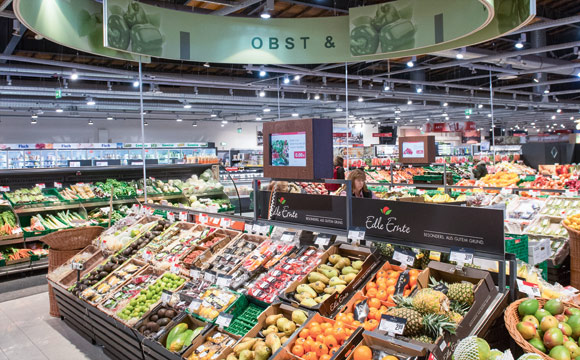In order for a production company to be successful, owners must take care in advance of the formation of its product policy. Usually, a specially trained person is hired for this position - a merchandiser who manages this area. Its task is to improve the economic performance of the company by means of improving the existing product range and product range.

Tasks and purpose
Commodity policy is one of the most important tools for promoting the market of goods manufactured by the enterprise. Its purpose covers the study and analysis of the consumer market, forecasting and modeling needs, as well as the creation of proposals based on the needs of customers. Products offered by the company must fully meet the needs of customers in terms of quality and quantity.

If product policies are neglected, this can lead to a decrease in sales efficiency, and the company will lose competitiveness. The assortment of finished products can also suffer. Adverse moments will cause significant damage to its structure, which can lead to instability.
Product policy components
A product range is a grouping of products that are concentrated together at a specific manufacturing level. The variety of these products should be focused exclusively on the consumer, taking into account the wishes and needs of customers.

Commodity nomenclature - this is the whole set of products that this company produces. Usually it acts as a list in which the names of the goods produced, the quantity released, the coding corresponding to each type and subspecies are indicated.
Characteristics of the components of product policy
The range of products can come in several forms. It can also be characterized by certain quantitative parameters. The product range also has its own characteristics. Let's get acquainted with the most important of them.
Varieties of assortment
These include:
- Industrial. It means goods produced by a separate branch of an industry or an individual factory in a given industry. Such an assortment can represent dozens or hundreds of products that are produced at a particular enterprise.
- Trade. Products presented in the distribution network. For example, one particular store may focus on one type of product manufactured by various plants.
- Plain. This type of assortment represents a category of products that can be classified in no more than three ways. An example in this form can be a bread stall, located, for sure, at every home.
- Complicated. This assortment is made up of product communities grouped by more than three characteristics. Most typical for supermarkets that target a different target segment.
- Enlarged. Goods that, according to total marks, make up certain aggregates. Such products are classified into groups, classes and types. An example is heterogeneous departments in hypermarkets. In the gardening compartment, products of one specific purpose were selected, and in the children's corner a community of products of another purpose was already represented.

- Deployed. This variety of assortment is represented by a large number of product variations. For example, a shopping store sells shoes, which are represented by its various types - boots, shoes, sneakers.Also, these products are manufactured by a variety of brands and sent to buyers with any material possibilities.
Assortment numerical parameters
Structure - the correlation of product groups, subgroups, types, varieties and names of disparate products in the general set of goods.
Latitude - filled with the number of names and modifications that are contained in the entire range. The wider it is, the more filled the market will be.
Completeness is an abundance of variations and names of products included in certain groups of similar products.
The range of products of each company can be characterized by different parameters. Consider the most significant of them:
- width;
- depth;
- saturation;
- harmony;
- rationality;
- novelty.

By the width of the commodity nomenclature is meant the number of assortment groups covered by it with the products manufactured by the company. For example, a certain household chemical plant produces powders, bleaches, shampoos, and soap. All this is one assortment group of items for washing and washing.
The depth of the product range is how diverse the offer of goods in one assortment group can be. For example, the same toothpaste is offered in excellent packaging, with the addition of, say, menthol. With this approach, the depth indicator becomes much higher.
Also, this list of finished raw materials can be characterized in terms of saturation. It implies the number of separate products manufactured by this company.
The harmony of the product range means how close are the products manufactured by one company to each other. As a rule, finished products should be similar in use and produced according to the same standards and requirements. For example, a company that produces household chemicals, it is impractical to produce textile or food products.
The rationality of the nomenclature of finished products shows how well the organization succeeds in achieving its goal in terms of customer satisfaction.
Novelty shows how this product can meet the changing needs of customers.
The development of the company
To improve and develop activities, it is advisable for the company to resort to such methods:
- Increasing the product range of goods by creating new assortment categories.
- Saturate the existing composition with new subspecies and packaging.
- To diversify variations in the production and packaging of new products of the company.
Production analysis

To assess the planned change in the product range, you need to consider how much the stipulated production procedure corresponds to the actually released goods in the reporting period. It is also necessary to identify whether the production, planned by the company, of the products of a separate assortment subgroup is fully carried out. In order to analyze the numerical coefficients of the plan, you need to consider the following components:
- The growth rate of production. It is characterized by how the average daily production of goods increases.
- The rhythm of production. It is determined by calculating data on the degree of readiness of individual nodes throughout the month.

Such an analysis of the product range will not show a cumulative assessment of the completed order, so you need to calculate the index of the product mix. It is calculated by comparing the manufactured products with each other, according to which the plan prescribed in the nomenclature is completed or exceeded. They are counted in the amount of the cost of planned production. As well as goods for which the plan is not fulfilled. It is considered in the amount of the cost of the actual issue. It should be noted that the same prices are taken for this analysis.It can be either comparable wholesale prices of manufacturers, or their wholesale cost, prescribed in the plan. Also, products already manufactured, but not provided for in the plan, should not be taken into account in the calculation.
Conclusion
Based on all of the above, we can conclude that neither the industrial nor the commodity enterprise will function safely, ignoring the assortment policy and not focusing it on the client. A competent merchandiser must always keep up with the times in order to predict the demand for the product and the proper volume of its output. For this, it is important to know all the nuances of your business and be able to conduct a competent analysis.

